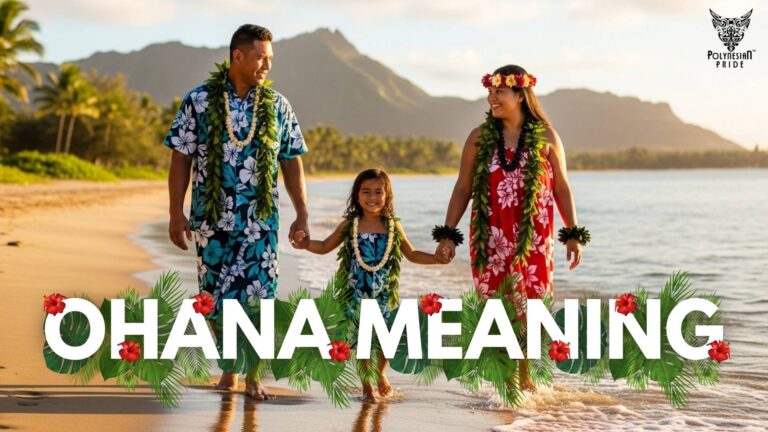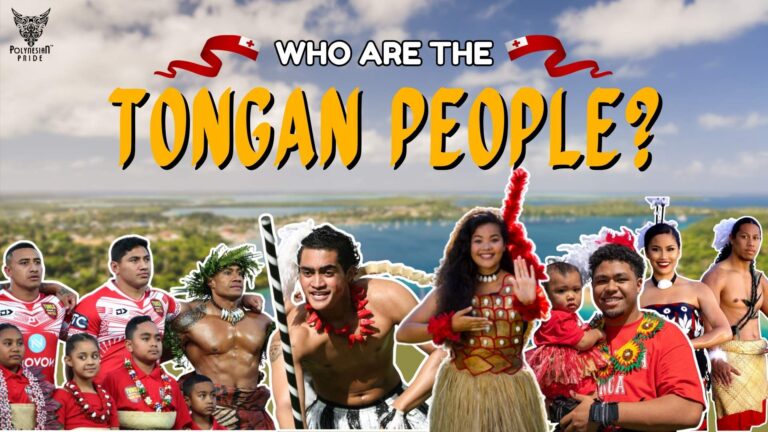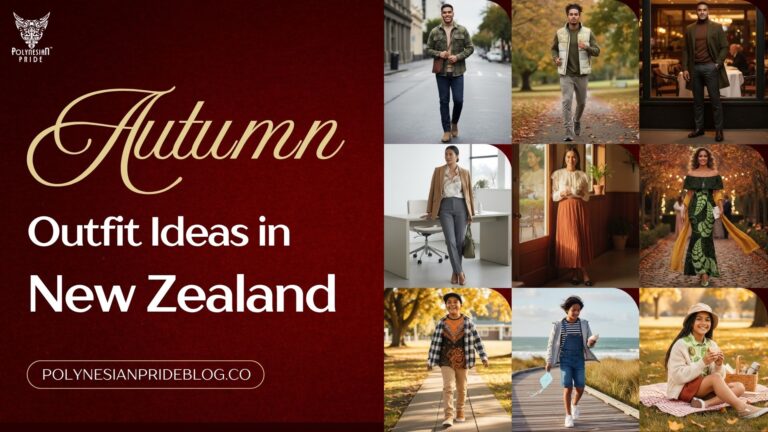12 Surprising Facts About New Zealand Traditional Dress
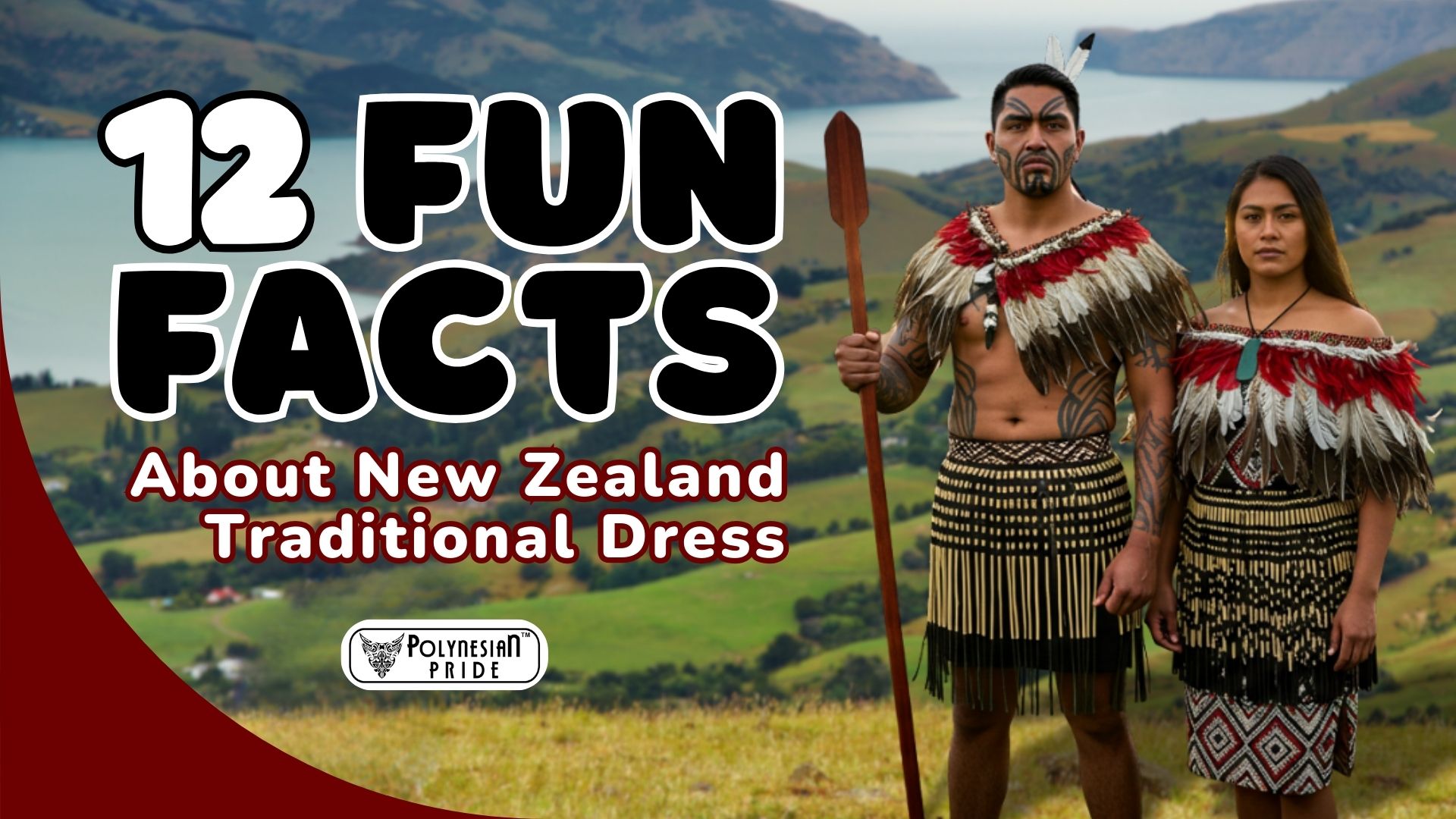
Think of this as your quick-grab cultural cheat sheet. If you’re visiting New Zealand, or ever lucky enough to wear New Zealand traditional clothing, you’ll want to know what you’re putting on, how to wear it with respect, and why it matters.
These 12 facts are your pocket notes: the key things locals might not tell you, but that make all the difference when you step into a marae, watch a kapa haka performance, or attend a ceremony in traditional dress in New Zealand.
By the time you land in Aotearoa, you’ll already speak the silent language woven into every feather and fiber.
New Zealand Traditional Dress Fact #1: Kākahu vs Korowai are Not The Same Meaning
According to Dr. Kahutoi Te Kanawa, pou ārahi curator at the Auckland Museum: “Kākahu is an overall word for clothing in Māori but a korowai is a specific type of cloak and it’s a tag one. It’s called hukahuka or kārure. It’s a three-ply or two-ply tag. The hukahuka relates to the snow as it falls.”
So, Kākahu is the overall Māori word for clothing or garments, while korowai is a specific type of cloak within that category. There are several main types of kākahu, each carrying its cultural meaning:
- Korowai: a prestigious cloak adorned with hukahuka (tassels).
- Kahu huruhuru: Cloaks made from feathers of native birds (kererū, tūī, kākā, kiwi…).
- Kahu kiwi: cloaks made with kiwi feathers, representing prestige and sacredness.
- Kahu Kuri: cloaks made from dog skin, historically rare and highly valued.
- Kaitaka paepaeroa: finely woven cloaks with decorated tāniko borders.
In short, every korowai is a kākahu, but not every kākahu is a korowai.
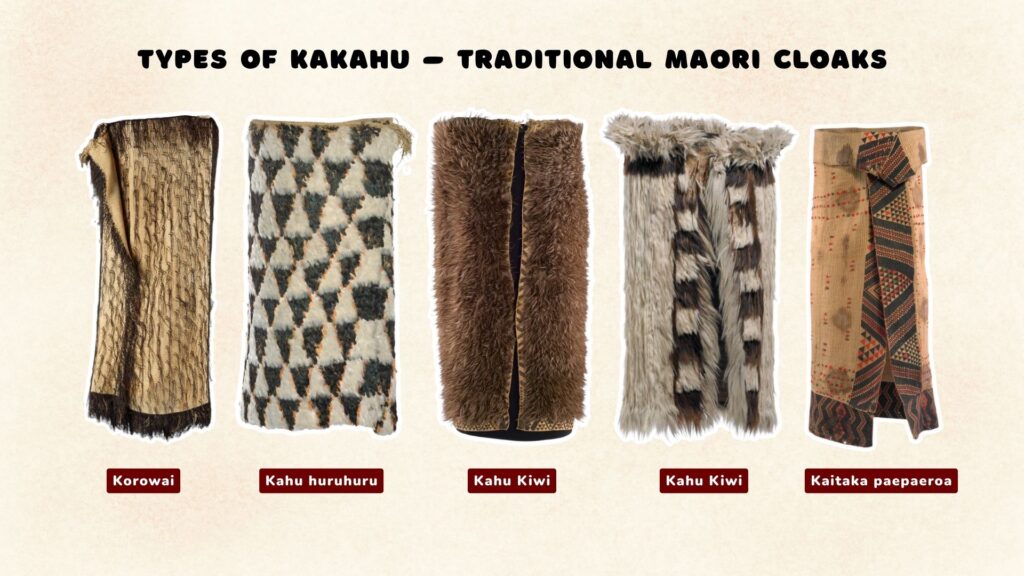
New Zealand Traditional Dress Fact #2: Kahu Kurī Is the Rarest Māori Cloak
For New Zealand traditional clothing, the Kahu Kurī is the rarest of all traditional Māori cloaks. Unlike other kākahu woven with flax fibers and feathers, the kahu kurī was made from the skin and hair of the kurī, a Polynesian dog brought to Aotearoa (New Zealand) by early Māori settlers.
Because the kurī became extinct in the 19th century, authentic kahu kurī can no longer be made. The few surviving examples are preserved today as taonga (sacred treasures) in museums and iwi (tribal) collections.
Traditionally, a kahu kurī was reserved for rangatira (chiefs) and people of the highest mana. Today, they are rarely, if ever, worn – only entrusted on the rarest ceremonial occasions that making them one of the most revered symbols of Māori heritage.
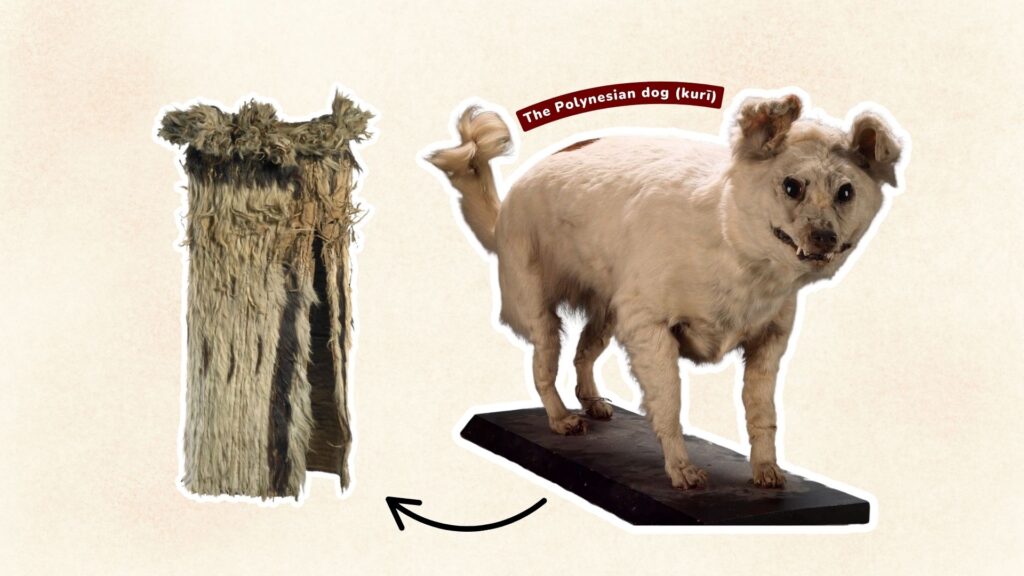
Fact #3: Queen Elizabeth Has a 75-Year-Old Korowai
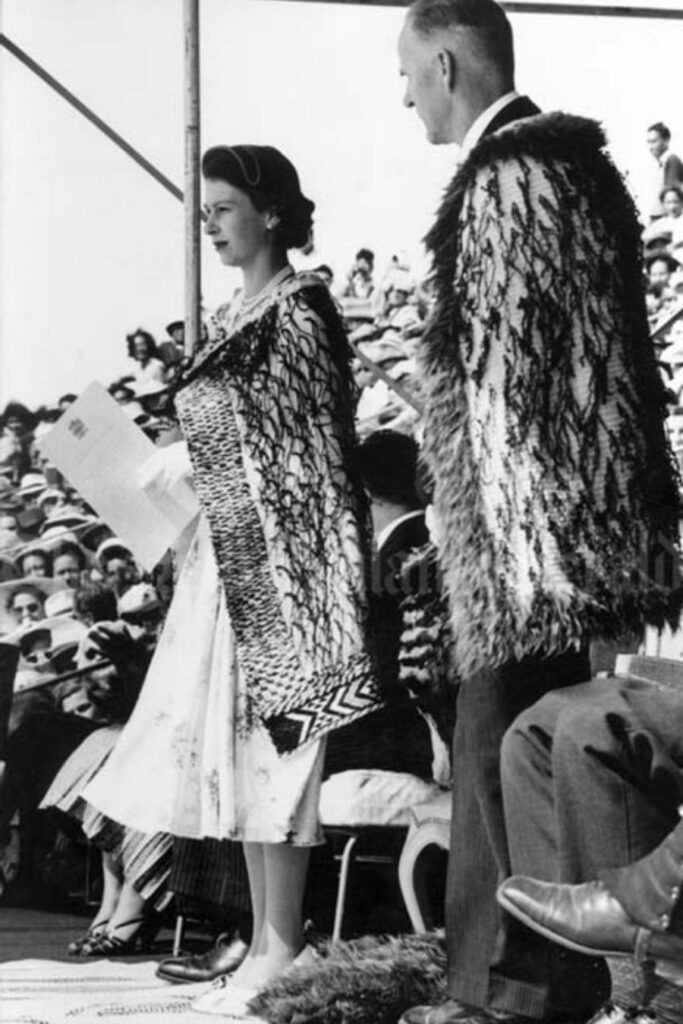
In 1953–54, during her first royal tour of New Zealand, Queen Elizabeth II was gifted a korowai that symbolizes honor and respect from the Maori people.
She wore it proudly during the tour and again decades later, including during her Golden Jubilee visit in 2002.
This isn’t just royal fashion but a sign of deep cultural exchange, where The Queen’s continued wearing of her korowai on later visits demonstrates the enduring and meaningful nature of this gift.
Fact #4: Traditional Māori Weaving Doesn’t Always Use a Loom
Māori weaving isn’t just about making clothes but an art form passed down through generations.
Many skilled weavers create intricate tāniko patterns entirely by hand, using traditional techniques like raranga (plaiting), whatu (finger-twining), and whiri (braiding).
Unlike many textile traditions, Māori weaving doesn’t rely on a loom. Instead, it uses flax fibres (harakeke), the weaver’s fingers, and simple tools like pegs to form intricate geometric designs that carry profound cultural significance.
Today, the Te Roopu Raranga Whatu o Aotearoa (the national weaving collective) plays a key role in preserving and reviving these skills, ensuring that the art form continues to thrive in modern Aotearoa.
Fact #5: Māori Cloak-Making Nearly Disappeared in the 1800s
By the late 1800s, Māori weaving traditions, particularly the crafting of korowai Māori, had nearly vanished. The introduction of European clothing, materials, and mass production significantly altered daily dress, rendering traditional weaving less practical and discouraging its use in many cases.
The art of intricate weaving simply didn’t fit into the fast-paced colonial world. But the story doesn’t end there. In the mid‑20th century, visionary weavers like Rangimārie Hetet and her daughter, Diggeress Te Kanawa, spearheaded a revival.

They broke tradition by teaching weaving broadly in not just within one’s own iwi, helping spark a cultural renaissance.
Efforts were also formalized through institutions like the national weaving school Te Rito (established 1969), and later through the network of weaving collectives and hui organized by Te Roopu Raranga Whatu o Aotearoa.
As a result, cloak-making has been reborn and is now regarded as a powerful symbol of cultural identity and resilience.
Fact #6: Māori Men Wear Skirts, and Here’s Why
In Māori culture, piupiu – a skirt-like garment made from prepared flax is worn by both men and women, especially during kapa haka (traditional performance) and ceremonial events.
For Māori, the piupiu isn’t about gendered fashion; it’s about function, symbolism, and rhythm.
- Function: The free-hanging flax strands create a swaying motion and rustling sound that amplifies the power of dance and haka movements.
- Symbolism: The movement of the piupiu represents the connection between the wearer, the land, and ancestral spirits.
- Equality: In traditional Māori performance, unity is key, so both men and women wearing a piupiu reinforce the collective identity of the group.
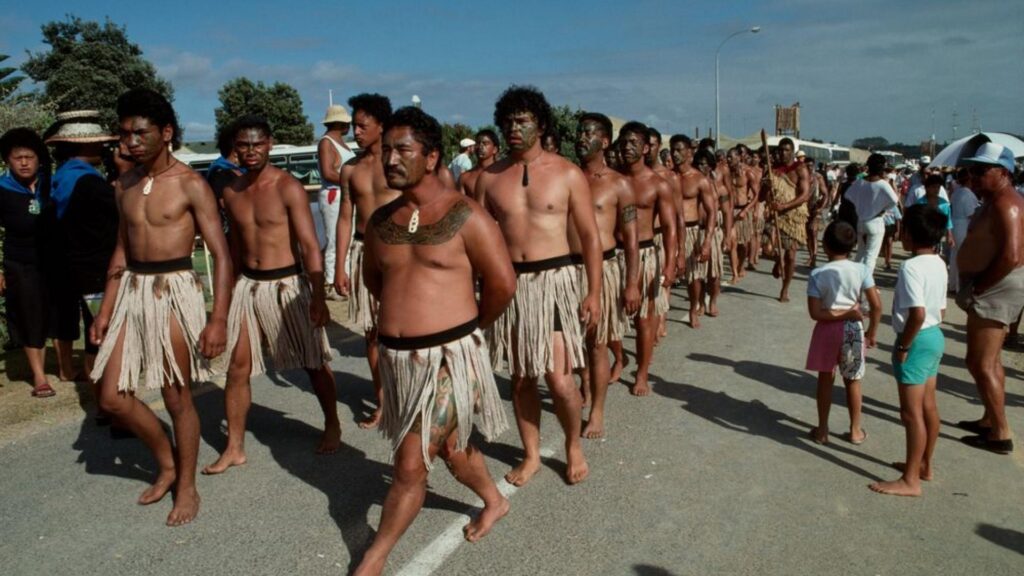
That’s why, while it might look like a skirt to outsiders, the piupiu is a piece of cultural armor that was built for strength, pride, and connection, not for style categories like “men’s” or “women’s”.
Fact #7: Each Māori Tribe Has Its Own Clothing Style, And There Are Around 80 Tribes!
New Zealand is home to about 80 iwi (tribes), each with its own dialect, customs, and cultural identity. Traditional clothing isn’t one-size-fits-all, but every iwi has unique garments that reflect its geography, climate, and history. For example:
- Ngāi Tahu (South Island): Known for kahu kurī (dogskin cloaks) and finely woven flax korowai, designed for the colder southern climate.
- Ngāpuhi (Northland): Often wear kahu huruhuru (feather cloaks) in bright, symbolic colors, suited to warmer weather and representing mana (prestige).
- Ngāi Tūhoe (Te Urewera): Favour piupiu (flax skirts) and natural forest adornments, reflecting their deep connection to the surrounding bushlands.
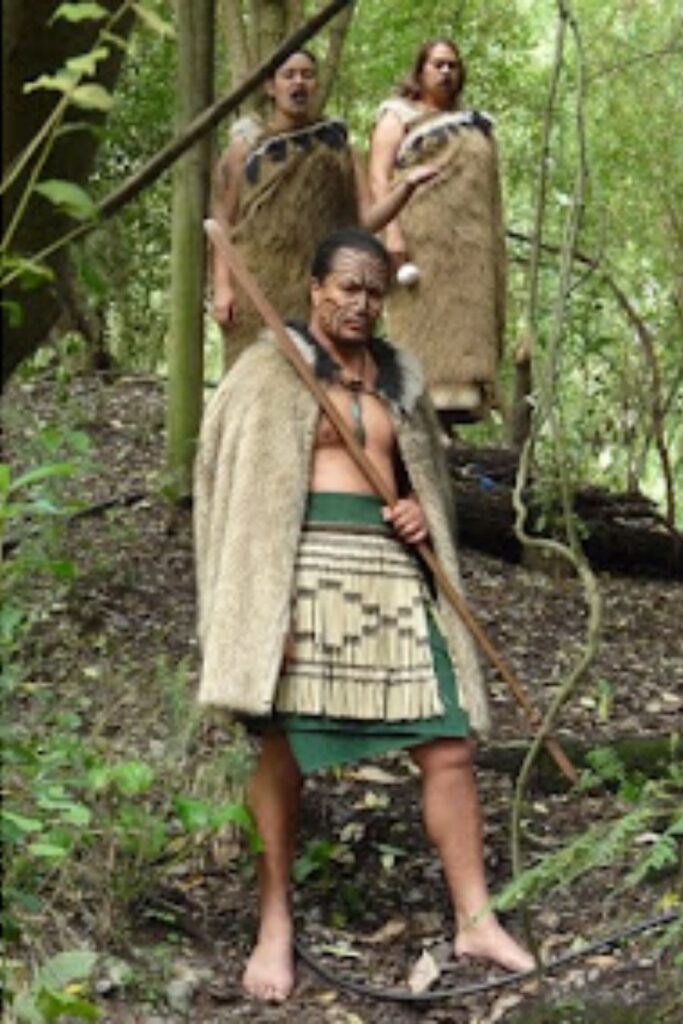
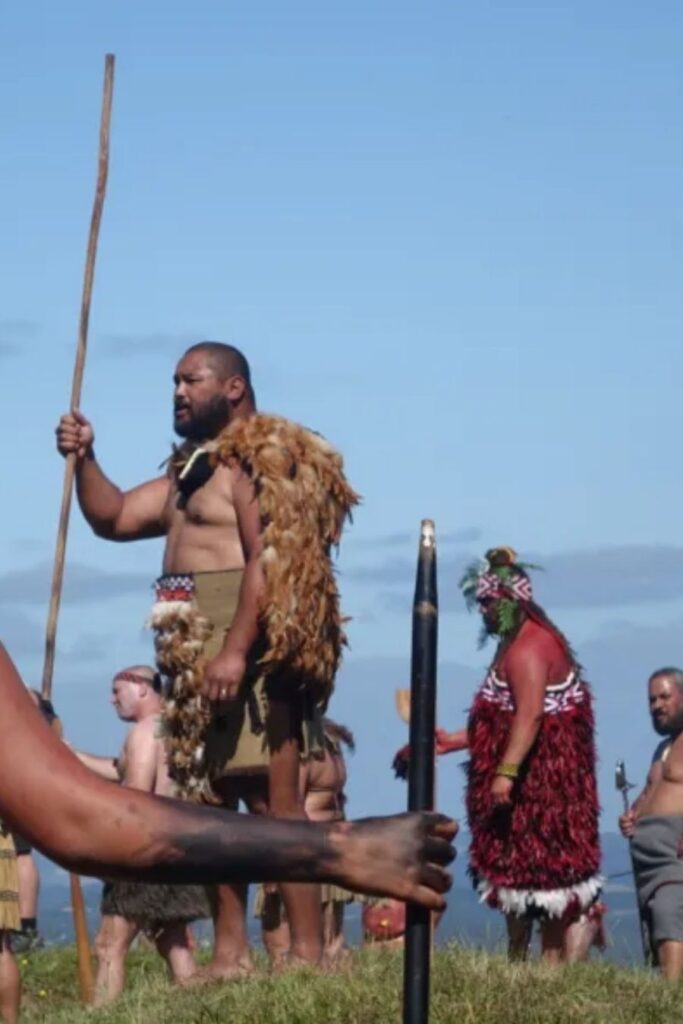
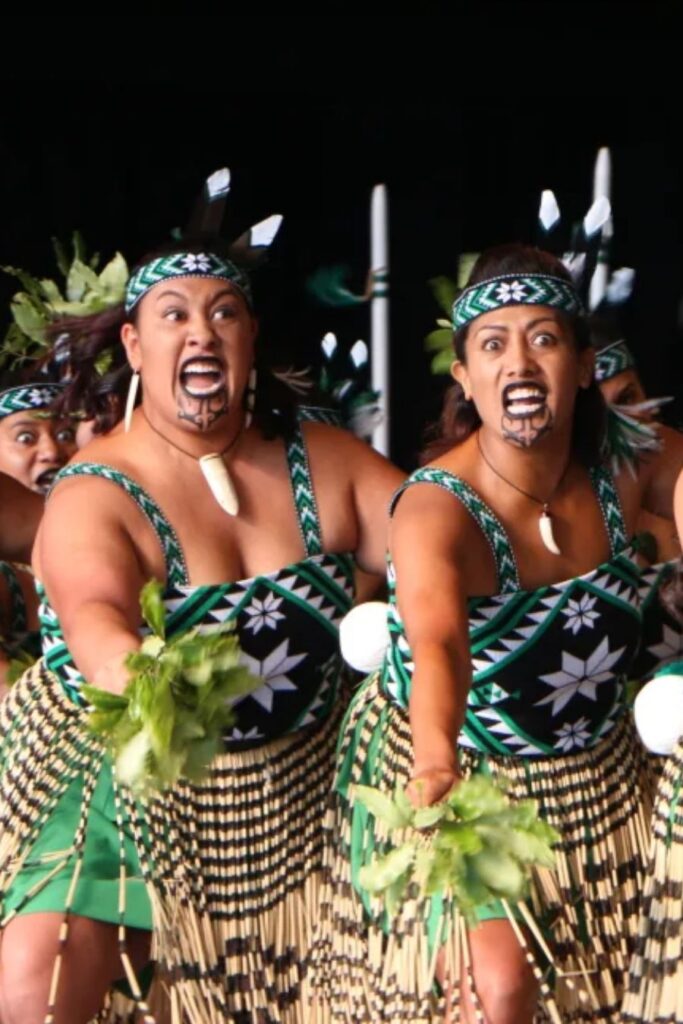
Fact #8: Others Wear Gold and Silver, Māori Wear Pounamu
In Māori traditional clothing, pounamu (New Zealand greenstone) is one of the most treasured accessories, not just for its beauty, but for its cultural weight.
Carved into pendants (hei-tiki), earrings, or ceremonial weapons (mere), pounamu pieces are often gifted to mark milestones like weddings, leadership appointments, or significant achievements.
While you might see plenty of “greenstone” in souvenir shops, true pounamu is rare. It’s classed as a semi-precious gemstone and is protected under New Zealand law by the Ngāi Tahu tribe, who hold guardianship over its sources.
That means every authentic piece comes with both legal protection and centuries of cultural respect woven into its story.
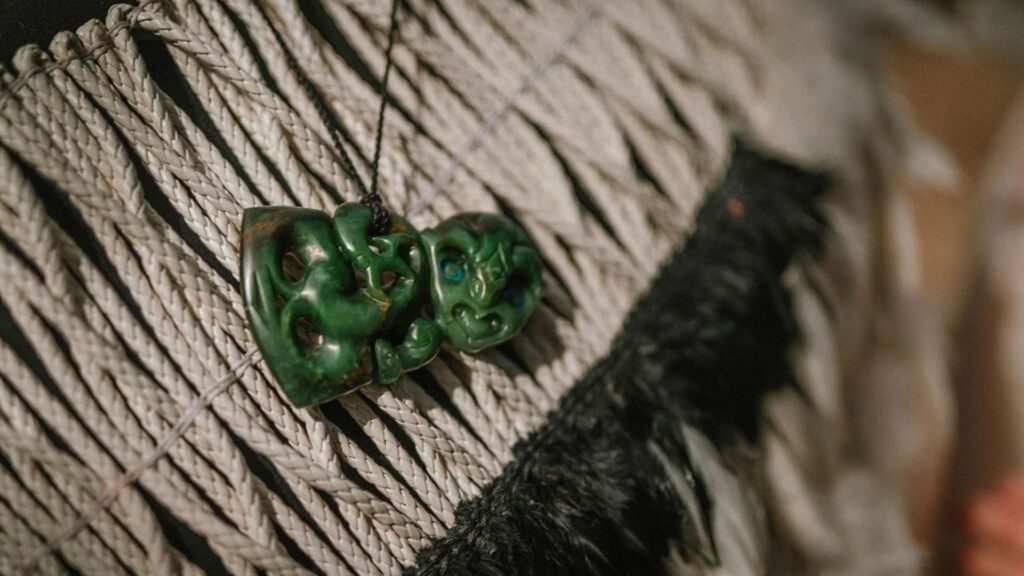
Fact #9: Tā Moko Tattoos are an important part of New Zealand traditional dress
For Māori, tā moko is the traditional art of tattooing, but not just body decoration. It’s a wearable record of identity, ancestry, and social status.
In pre-colonial times, tā moko was considered part of a person’s attire, completing their formal appearance for ceremonies, warfare, and leadership roles.
Why it’s important:
- Tā moko visually communicates who you are from your genealogy (whakapapa), tribal affiliations (iwi), achievements, to your life journey.
- Wearing tā moko is an expression of pride and a living link to Māori heritage.
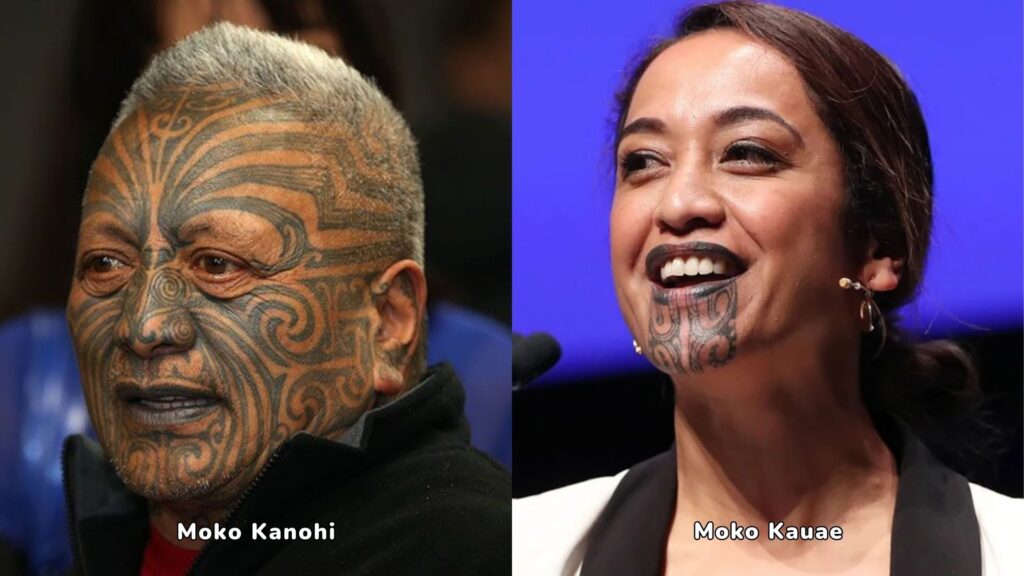
Main types of Tā Moko:
- Moko Kanohi (Men’s Facial Tā Moko): Covers the entire face with spiral and linear patterns, each area representing specific family ties and personal history.
- Moko Kauae (Women’s Chin Tā Moko): Focuses on the chin (and sometimes lips), symbolizing leadership, wisdom, and cultural responsibility.
- Body Tā Moko: Applied on arms, legs, back, or buttocks, often to mark life achievements or warrior status.
Today, tā moko continues to be worn proudly at cultural events, kapa haka performances, and in everyday life, reinforcing its role as both personal identity and traditional “dress” in Māori culture.
Fact #10: Red, Black, and White Are the Core Colours of Māori Clothing
Māori colours meaning is deeply symbolic, with traditional dress often featuring three dominant shades: red, black, and white – each tied to Māori cosmology:
- Red (Whero): Symbolises life force (mauri), strength, and the sacred blood of ancestors. It’s often associated with high status and vitality.
- Black (Pango): Represents potential, depth, and the darkness from which all things are born, that tied to the creation story (Te Kore), the realm of potential being. It can also stand for prestige and authority.
- White (Mā): Symbolises purity, peace, and spiritual light, connected to Te Ao Mārama, the world of light and knowledge.
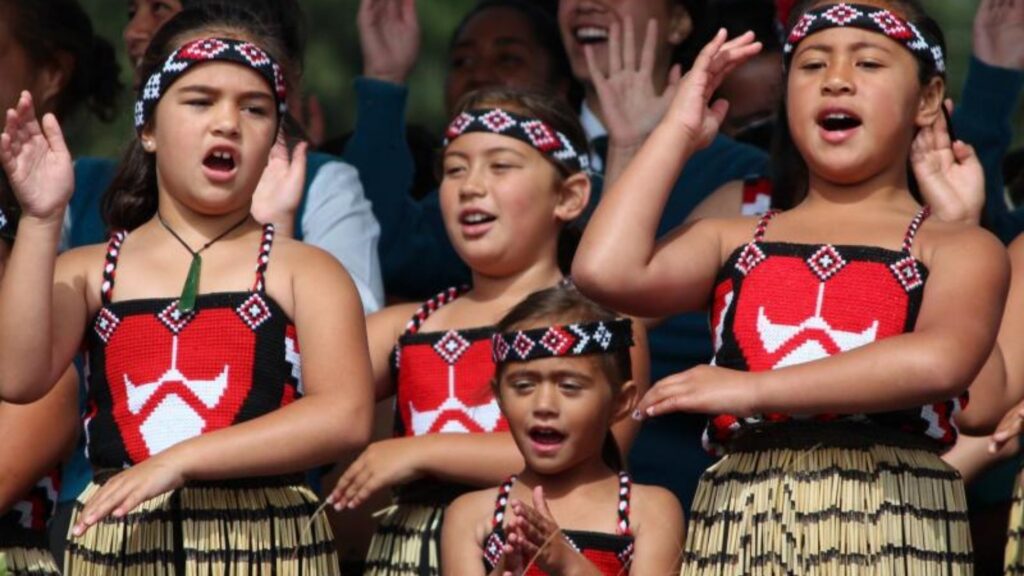
When combined, these colors create a powerful visual identity that’s immediately recognizable as Māori, carrying both ancestral stories and spiritual meaning in every stitch.
Fact #11: Non-Māori Can Wear a Korowai, But Only If It’s Gifted
In Māori culture, the korowai (ceremonial cloak) carries deep mana (prestige, authority). While Māori wear it for important events such as weddings, funerals, graduations, or pōwhiri-non-Māori can also wear one, but only if it’s been given to them.
Gifting a korowai is an act of respect, trust, and acknowledgment of your connection to the community.
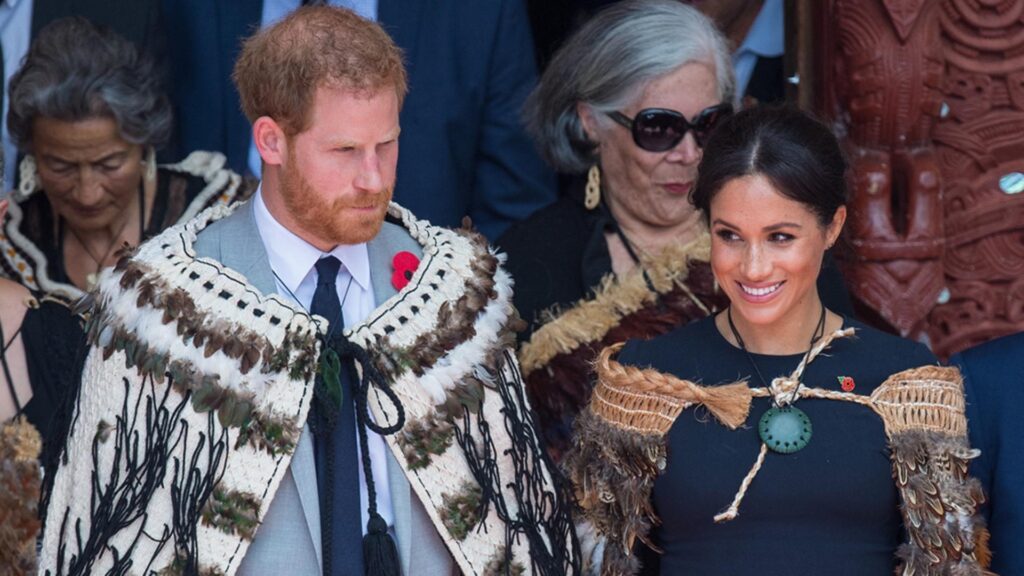
Many foreign leaders visiting New Zealand have been presented with a korowai as a gesture of Māori hospitality and honor. The gift symbolizes friendship and the sharing of cultural pride, making it one of the most meaningful ways to welcome a guest.
Wearing a gifted korowai means carrying not only fabric, but also the story, blessings, and mana of the people who gave it to you.
Fact #12: Traditional vs Modern Māori Dress is Different
Traditional New Zealand dress follows strict cultural rules. Each garment has its own purpose and meaning, for example:
- Korowai
- Piupiu
- Tātua
- Hei tiki or pounamu pendants
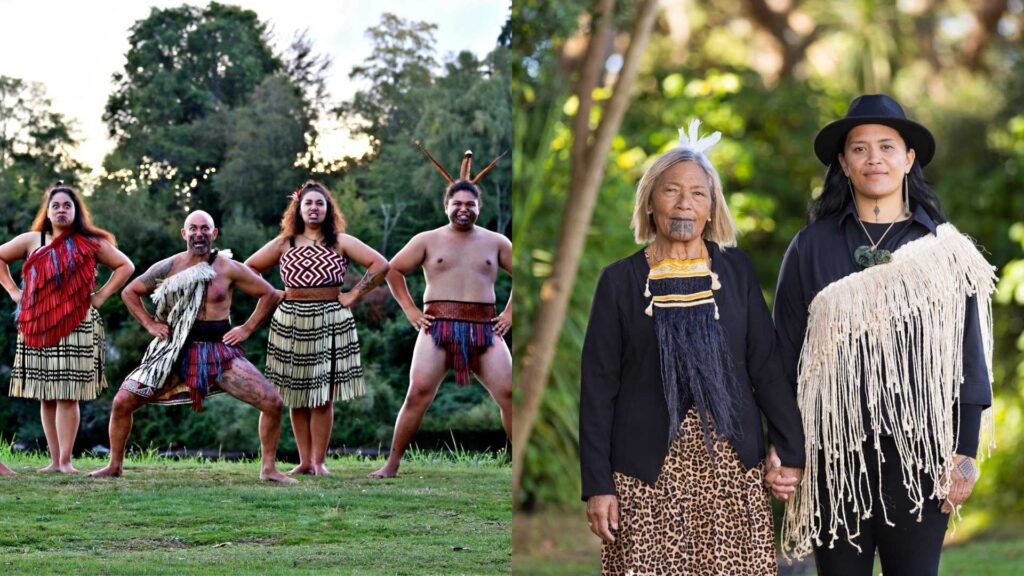
These items are never “just for fun”. They are ceremonial, symbolic, and deeply respected.
Modern Māori dress, on the other hand, looks a lot like everyday New Zealand fashion. Think relaxed, comfortable, and practical:
- Casual shirts or hoodies (often with Māori patterns printed on them).
- Baggy jeans, sporty sneakers, or warm layers (New Zealand weather can switch from sunny to chilly fast).
- Laid-back streetwear or sporty vibes most of the time.
Just like other New Zealanders, Māori people don’t dress up fancy unless it’s for an important event.
Do’s and Don’ts with New Zealand Traditional Dress
| ✅ Do’s | ❌ Don’ts |
| Ask before wearing or touching: Always get permission from the owner or the event host. | Don’t wear a korowai just for fun: It’s a garment of honour, not partywear. |
| Learn the story: If you’re wearing a korowai or piupiu, ask about its meaning and origin. | Don’t buy a korowai for yourself if you’re not Māori: In Māori tradition, it should be gifted to you. |
| Dress appropriately for the occasion: Wearing traditional dress at a marae or ceremony? Follow the event’s cultural protocols. | Don’t copy tā moko designs for tattoos: These are sacred and personal. |
| Show respect in photos: Pose naturally and avoid treating the garment as a costume. | Don’t treat garments as props: They are living symbols of heritage. |
| Support Māori artisans: Buy from Māori-owned businesses or recognized cultural centres. | Don’t ignore the protocols: Especially at a marae, where clothing is part of a sacred space. |
Celebrate Māori Culture in Style with Polynesian Pride Shop
If reading about New Zealand traditional dress has inspired you, why not bring a touch of Māori artistry into your wardrobe – in a way that’s modern, stylish, and travel-ready?
At Polynesian Pride Shop, we design contemporary apparel that honours the unique beauty of Māori culture, blending traditional patterns with fashion-forward styles.
- Premium fabric: 100% wrinkle-free polyester – cool, lightweight, and perfect for travel.
- Unique designs: Every piece celebrates Māori heritage, and yes, you can customize it to suit your style.
- Worldwide shipping: Fast and reliable delivery straight to your doorstep.
- Customer care: Friendly, knowledgeable staff ready to help you choose the perfect size.
- 100% refund or exchange: If your item has any defect or you’re not completely happy.
- Trusted quality: Rated over 4.0 stars on independent review site Trustpilot.
✨ Whether you’re a traveler looking for a meaningful souvenir, a local wanting to celebrate your roots, or simply someone who loves unique fashion, Polynesian Pride Shop makes it easy to wear your appreciation for Māori culture.
👉 Shop Now and find your next favorite piece that tells a story.
Final Thoughts
When you see New Zealand traditional dress, you’re looking at centuries of stories, artistry, and identity woven together. Every feather, every flax strand, every pattern holds a piece of history.
If you’re visiting, don’t just admire it from afar. Step onto a marae, join a Matariki celebration or feel the heartbeat of a kapa haka performance. Watch how the garments move, listen to the stories they tell, and notice how they connect people to land and ancestors.
And if you ever have the privilege to wear one, whether it’s a korowai, a piupiu, or a feathered cloak – wear it not just on your shoulders, but with the dignity, respect, and pride that it deserves.
Because at that moment, you’re carrying more than clothing – you’re carrying the spirit of Aotearoa.
FAQs
1. Why are red, black, and white important in Māori dress?
They’re the core colors of Māori culture: red for life force, black for identity and knowledge, white for purity and peace.
2. What materials are used in traditional clothing?
Mostly harakeke (flax), bird feathers, dog skins, and adornments like greenstone, bone, or shell.
3. Piupiu vs cloak – what’s the difference?
Piupiu is a flax skirt that sways in kapa haka. Cloaks (korowai, kahu huruhuru) are worn over the shoulders for warmth, prestige, and ceremony.
4. What is a tātua belt for?
It secures garments, can carry tools, and in some cases works as simple armor. Many were heirlooms.
5. Where can I buy Māori-inspired clothing today?
For modern apparel that celebrates Māori culture that made from wrinkle-free, 100% polyester fabric, with customizable designs, and shipped worldwide – check out Polynesian Pride Shop!

I’m a lifestyle curator who has blended Polynesian foodways and fashion into everyday life for over five years. I celebrate makers, materials, and style—with heritage as the headline, not the footnote.
My contact:
Email: [email protected]
Tel: +689 87 246 367





